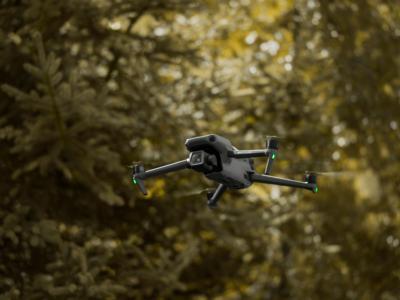Sat, Mar 16, 2024
"Discretionary Enforcement" Goes Away on March 16th
The FAA's policy to exercise discretion in prosecuting those who fall afoul of UAV Remote ID Rule is coming to a close, ending the grace period allotted to the industry.

The FAA expected compliance with the rule after September of 2023, but said that it would “consider all factors in determining whether to take enforcement action” given the limited availability of broadcast modules. The regulator had given UAV pilots until March 16th to bring their aircraft into compliance, but now they'll have to play by big-boy rules. Remote ID requires one of three compliance methods, whether that's the purchase of a UAV with a factory-equipped ID broadcasting system, a separate broadcaster to retrofit, or to operate in an FAA-Recognized Identification Area. Such "FRIA" zones are essentially amnesty areas set apart for Remote-ID-less UAV operations. From now on, non-compliant operators can face fines and suspension, even revocation of their drone pilot certificates. Municipal and state public safety officials can visit the FAA’s compliance program and are encouraged to check with FAA guidance to ensure compliance too.
Remote ID applies to "drones which are required to be registered or have been registered with the FAA, including those flown for recreation, business, or public safety, and drones that are foreign-registered". The intent is to provide just a little more heads-up to everyone operating in US airspace, particularly those in low-altitude airspace prone to VFR operations. ADS-B has given many pilots and operators a sort of pseudo-TAWS, but that system is only as functional as the overall level of registration allows it to be. The FAA says that it's not just about the safety enhancement, either, since "Remote ID also helps to lay the foundation for routine advanced operations such as package delivery and flying beyond visual line of sight."
For those who think they're already in compliance, a quick check of the Public DOC List could help prevent future problems. The FAA stressed that even if a product is advertised as “Remote ID ready” or similar verbiage, only drones or broadcast modules actually listed on the FAA DOC are in compliance with the rule. Remote ID serial numbers must be updated via FAADroneZone, too. Part 107 pilots have to register each aircraft individually.
More News
Also: Netherlands Donates 18 F16s, 2 737s Collide On Ramp, E-7 Wedgetail Cut, AgEagle's 100th In S Korea The Pilot and Aircraft Privacy Act was introduced in the House by Represent>[...]
Pilot Also Reported That Due To A Fuel Leak, The Auxiliary Fuel Tanks Were Not Used On June 4, 2025, at 13:41 eastern daylight time, a Piper PA-23, N2109P, was substantially damage>[...]
Have A Story That NEEDS To Be Featured On Aero-News? Here’s How To Submit A Story To Our Team Some of the greatest new stories ANN has ever covered have been submitted by our>[...]
From 2023 (YouTube Edition): Reflections on War’s Collective Lessons and Cyclical Nature The exigencies of war ought be colorblind. Inane social-constructs the likes of racis>[...]
What Goes Around, May Yet Come Back Around, Klyde FMI: www.klydemorris.com>[...]
 Airborne 06.30.25: US v ADS-B Misuse, Natl STOL Fire, Volocopter Resumes
Airborne 06.30.25: US v ADS-B Misuse, Natl STOL Fire, Volocopter Resumes NTSB Prelim: Piper PA-23
NTSB Prelim: Piper PA-23 ANN FAQ: Submit a News Story!
ANN FAQ: Submit a News Story! Classic Aero-TV: One Mans Vietnam
Classic Aero-TV: One Mans Vietnam Klyde Morris (06.30.25)
Klyde Morris (06.30.25)



